As I stirred the vibrant colors of my Creamy Gochujang Udon Noodles, the irresistible aroma filled my kitchen, whisking me away to bustling street markets in Korea. This bowl of goodness is not only quick to whip up—just 25 minutes for a satisfying weeknight dinner—but it also boasts a tantalizing blend of creamy and spicy flavors that will pique the interest of any home chef. The addition of fresh vegetables not only elevates the taste but makes it a nutritious delight too. Perfect for customizing with your protein of choice, these noodles are sure to impress anyone fortunate enough to share a bite. Ready to dive into a world of flavor and comfort? Let’s get cooking!
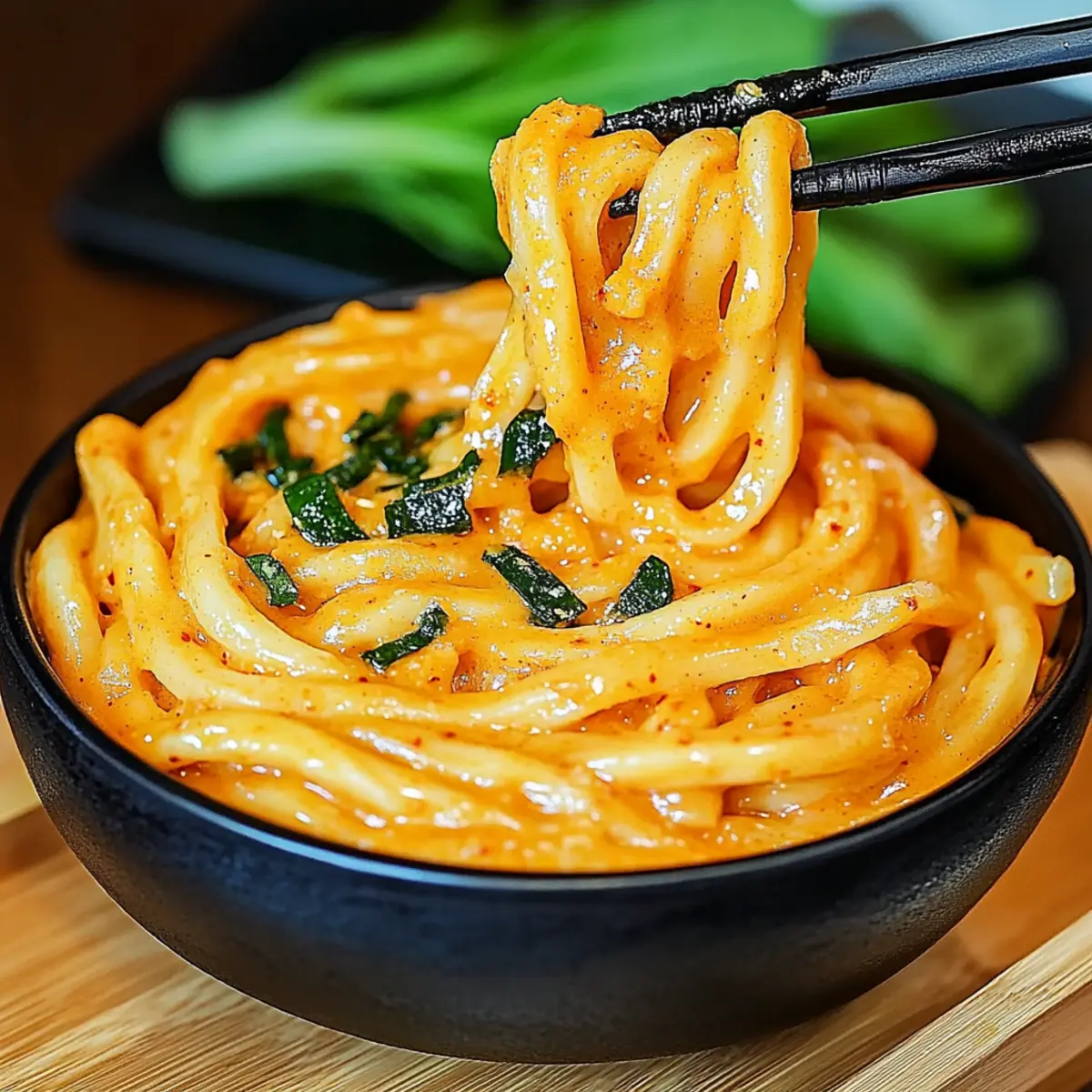
Why are these noodles a must-try?
Quick to Prepare: In just 25 minutes, you can create a gourmet dish that's perfect for busy weeknights.
Customization Galore: Tailor the recipe to your taste by choosing your favorite vegetables or proteins, making each bowl unique.
Bold, Creamy Flavor: The rich blend of gochujang and creamy peanut butter creates a mouthwatering sauce that delights the senses.
Vibrant and Nutritious: Packed with colorful veggies like broccoli and bell peppers, this recipe is as healthy as it is delicious.
Crowd-Pleasing Appeal: Whether for family dinners or casual gatherings, these Creamy Gochujang Udon Noodles will wow your guests.
For more delicious recipes, don’t forget to check out my Senegalese Peanut Stew and Thai Chicken Salad with Creamy Peanut Dressing for great pairing ideas!
Creamy Gochujang Udon Noodles Ingredients
For the Noodles
• Udon Noodles – This chewy base is filling and delightful; for a gluten-free option, try rice noodles instead.
For the Sauce
• Gochujang – This Korean chili paste adds a vibrant kick; consider a blend of miso paste and chili powder if you can't find it.
• Creamy Peanut Butter – Offers richness and creaminess; tahini can be a wonderful alternative if desired.
• Soy Sauce – Brings in salty umami; opt for tamari if gluten-free options are needed.
• Rice Vinegar – Balances the flavors beautifully; apple cider vinegar serves well as a substitute.
• Honey or Maple Syrup – Sweetens the sauce; feel free to adjust the amount to your taste or omit for a less sweet version.
• Coconut Milk – Creates a luscious creamy sauce; unsweetened almond milk can lighten the dish if you'd prefer.
For the Vegetables
• Vegetable Oil – Essential for sautéing; use any neutral oil you have on hand.
• Garlic (3 cloves, minced) – Infuses the dish with aromatic flavor; fresh is always best for an outstanding taste.
• Fresh Ginger (1 teaspoon, grated) – Adds a warm, zesty kick; though fresh is ideal, ground ginger can work in a pinch.
• Broccoli Florets (1 cup) – These crunchy morsels boost nutrition and color; feel free to swap in seasonal varieties like asparagus.
• Bell Peppers (1 cup, sliced) – Introduces sweetness and vibrancy; all types add a lovely flair.
• Snap Peas (1 cup) – Contributes a sweet crunch; green beans could be lovely in their stead.
For Garnish
• Green Onions – A fresh finish that brightens the dish; any herbs can provide an interesting twist.
• Sesame Seeds – Optional but they add delightful crunch and flavor; sprinkle generously for added texture.
Dive into crafting this delicious Creamy Gochujang Udon Noodles dish that brings warmth and excitement to your dinner table!
Step‑by‑Step Instructions for Creamy Gochujang Udon Noodles
Step 1: Cook Noodles
Begin by filling a large pot with water and bringing it to a boil over high heat. Add the udon noodles and cook according to package instructions for about 8-10 minutes. Once they are tender but still chewy, drain them in a colander and set aside; do not rinse to retain the starch that will help the sauce adhere.
Step 2: Sauté Aromatics
In a large skillet, heat 1 tablespoon of vegetable oil over medium heat. Add the minced garlic and grated ginger, stirring for about 1 minute until fragrant and golden. This step is crucial as it builds the flavorful base for your Creamy Gochujang Udon Noodles.
Step 3: Stir-Fry Veggies
Add the broccoli florets, sliced bell peppers, and snap peas to the skillet, sautéing for 5-7 minutes. Cook until the veggies are vibrant and tender-crisp, stirring frequently to ensure even cooking and to avoid burning the garlic. The colors should pop and aroma should fill your kitchen, inviting everyone to gather.
Step 4: Prepare Sauce
In a medium mixing bowl, whisk together the gochujang, creamy peanut butter, soy sauce, rice vinegar, honey, and coconut milk until smooth and well combined. Aim for a creamy consistency that can coat the noodles easily. This sauce is the heart of your Creamy Gochujang Udon Noodles, infusing them with a luscious flavor.
Step 5: Combine
Pour the creamy gochujang sauce over the sautéed vegetables in the skillet. Then, add the cooked udon noodles. Using tongs or a spatula, toss everything together until the noodles and veggies are evenly coated in the delicious sauce. This is where the magic of flavors unites in your dish.
Step 6: Heat Through
Continue to stir-fry the combined noodles and vegetables for an additional 2-3 minutes on medium heat. This helps meld the flavors together and ensures everything is piping hot. As you stir, the creamy sauce should cling beautifully to the noodles, creating a tempting dish.
Step 7: Serve
Remove the skillet from heat and transfer the Creamy Gochujang Udon Noodles onto serving plates. Garnish generously with sliced green onions and a sprinkle of sesame seeds for added flavor and texture. Serve hot and relish this comforting, vibrant meal that’s sure to impress your family or guests.
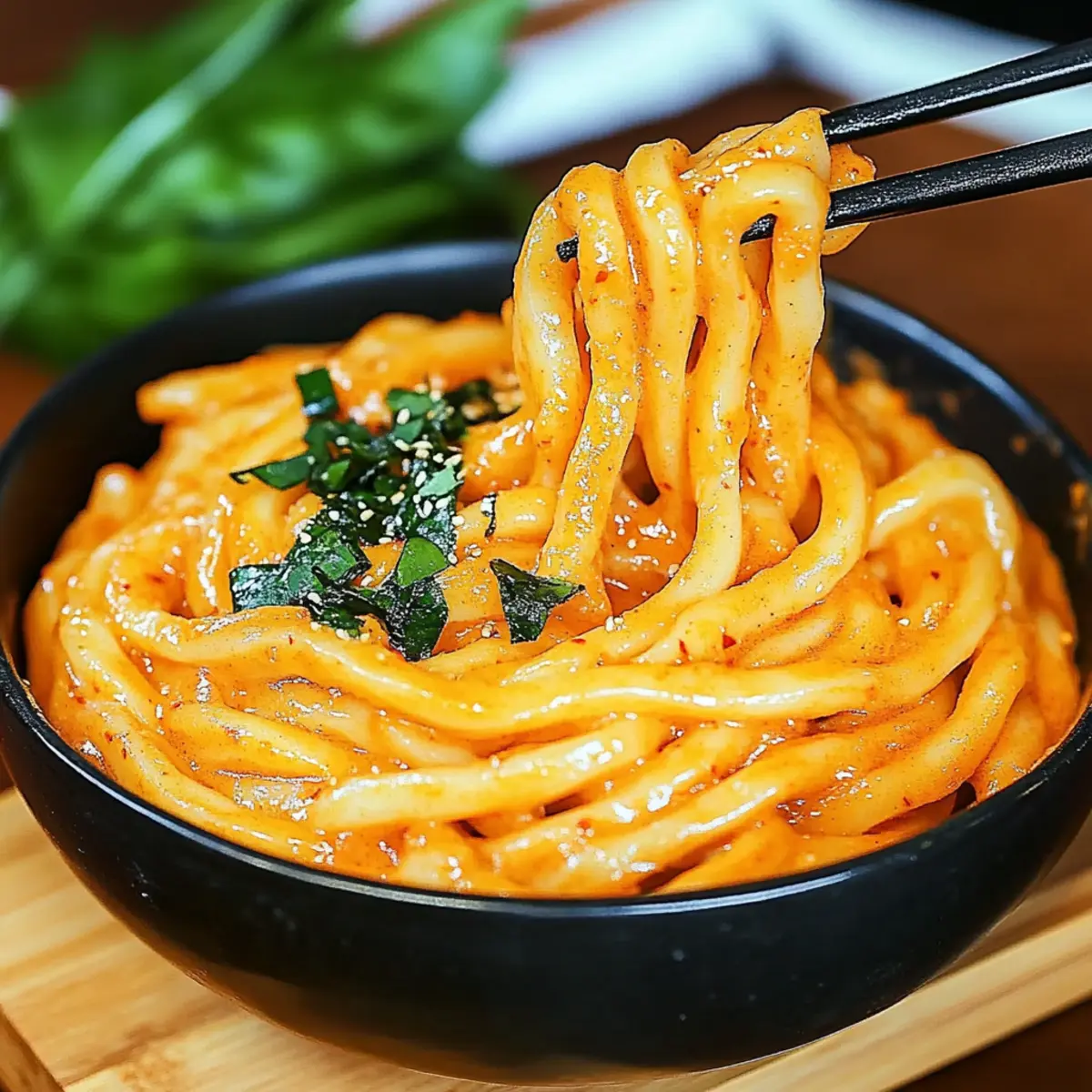
Expert Tips for Creamy Gochujang Udon Noodles
- Spice Control: Start with a small amount of gochujang; you can always add more to increase the heat. Everyone's spice tolerance varies!
- Fresh is Best: Use fresh garlic and ginger for maximum flavor. Dried substitutes can lack the depth needed in this creamy sauce.
- Variable Veggies: Don't hesitate to swap in seasonal or favorite vegetables. Just make sure they cook evenly to maintain texture.
- Protein Add-Ins: If adding a protein like chicken, shrimp, or tofu, do so during the final cooking phase to warm them without overcooking.
- Avoid Overcooking: Sauté the garlic and ginger just until fragrant to prevent bitterness, ensuring a beautifully balanced sauce.
- Perfect Reheating: When storing leftovers, add a splash of coconut milk when reheating to keep the sauce creamy and avoid dryness.
Make Ahead Options
These Creamy Gochujang Udon Noodles are perfect for meal prep, saving you time during busy weeknights! You can chop your vegetables (broccoli, bell peppers, and snap peas) and store them in an airtight container in the refrigerator for up to 3 days. Additionally, you can mix up the creamy sauce (gochujang, peanut butter, soy sauce, rice vinegar, honey, and coconut milk) and refrigerate it for up to 24 hours before serving. When you're ready to enjoy this delicious dish, simply sauté the aromatics and vegetables, heat the udon noodles, and combine everything with the prepared sauce for a quick finish. You'll have a comforting meal that's just as delightful as when freshly cooked!
Creamy Gochujang Udon Noodles Variations
Feel free to unleash your culinary creativity and make this dish truly your own!
- Vegan Delight: Swap creamy peanut butter with tahini for a delightful nut-free alternative. It brings a different earthy flavor that complements the spice beautifully.
- Gluten-Free Option: Use rice noodles in place of udon for a gluten-free take on this comforting dish. They’ll soak up the sauce just as wonderfully!
- Protein Boost: Add cooked chickpeas or tofu to amp up the protein while keeping it vegetarian. This twist provides heartiness, making each bite even more satisfying!
- Seafood Variation: Stir in shrimp or scallops during the last few minutes of cooking for a delectable seafood-infused experience. The sweet ocean flavor pairs perfectly with the spicy sauce.
- Extra Crunch: Toss in toasted peanuts or cashews as a garnish to add delightful crunch and elevate the dish’s texture. This simple tweak makes each bite a new adventure!
- Fiery Kick: Crank up the heat with sriracha or chili flakes for those who love spice. Start small, then adjust to your heat preference—it’s a fun way to personalize!
- Seasonal Veggies: Feel free to substitute vegetables based on what’s in season or your personal favorites. Think zucchini, asparagus, or even baby bok choy for vibrant alternatives!
- Creamy Twist: Substitute coconut milk with cashew cream for a rich, nutty flavor that envelops the noodles. This also adds a unique texture that’s simply luscious!
Explore these variations for different delightful experiences and make the Creamy Gochujang Udon Noodles your own! And if you need some more inspiration, don’t miss out on my English Lemon Posset for a fantastic dessert idea.
How to Store and Freeze Creamy Gochujang Udon Noodles
Airtight Container: Once cooled, transfer any leftovers into an airtight container and store in the fridge for up to 3 days.
Freezer Friendly: For long-term storage, freeze the noodles in a freezer-safe container for up to 3 months.
Reheating Tips: Thaw overnight in the fridge before reheating. Add a splash of water or coconut milk while warming to restore the creamy texture.
Customizable Protein Storage: If you've added protein, make sure it's fully cooked before storage. The same rules apply for keeping your tasty Creamy Gochujang Udon Noodles fresh!
What to Serve with Creamy Gochujang Udon Noodles
Pairing your Creamy Gochujang Udon Noodles with the right sides can elevate your meal into a delightful feast.
- Crispy Korean Potato Chips: These crunchy bites add a delightful contrast in texture, complementing the creamy noodles perfectly.
- Simple Cucumber Salad: A refreshing mix of cucumbers and rice vinegar offers a cool balance to the spice of the noodles.
- Steamed Edamame: This protein-packed side is simple yet satisfying and adds a nutty flavor that complements the dish's richness.
- Savory Vegetable Dumplings: These steamed or pan-fried dumplings add a chewy texture and umami flavor, pairing beautifully with the noodles.
- Spicy Kimchi: This fermented side dish brings tangy depth and spice, enhancing the overall flavor profile of your meal.
- Toasted Sesame Broccoli: Broccoli drizzled with sesame oil provides a nutty, toasted flavor that harmonizes with the creamy gochujang sauce.
- Asian-inspired Slaw: A colorful mix of cabbage and carrots offers a crunchy, tangy crunch that contrasts well with the saucy noodles.
- Chilled Green Tea: A soothing drink that not only refreshes but also aids digestion, making it a calming pairing for a spicy dish.
- Mango Sticky Rice: As a dessert, this sweet treat balances the spiciness of the noodles with its creamy coconut flavor and sweetness.
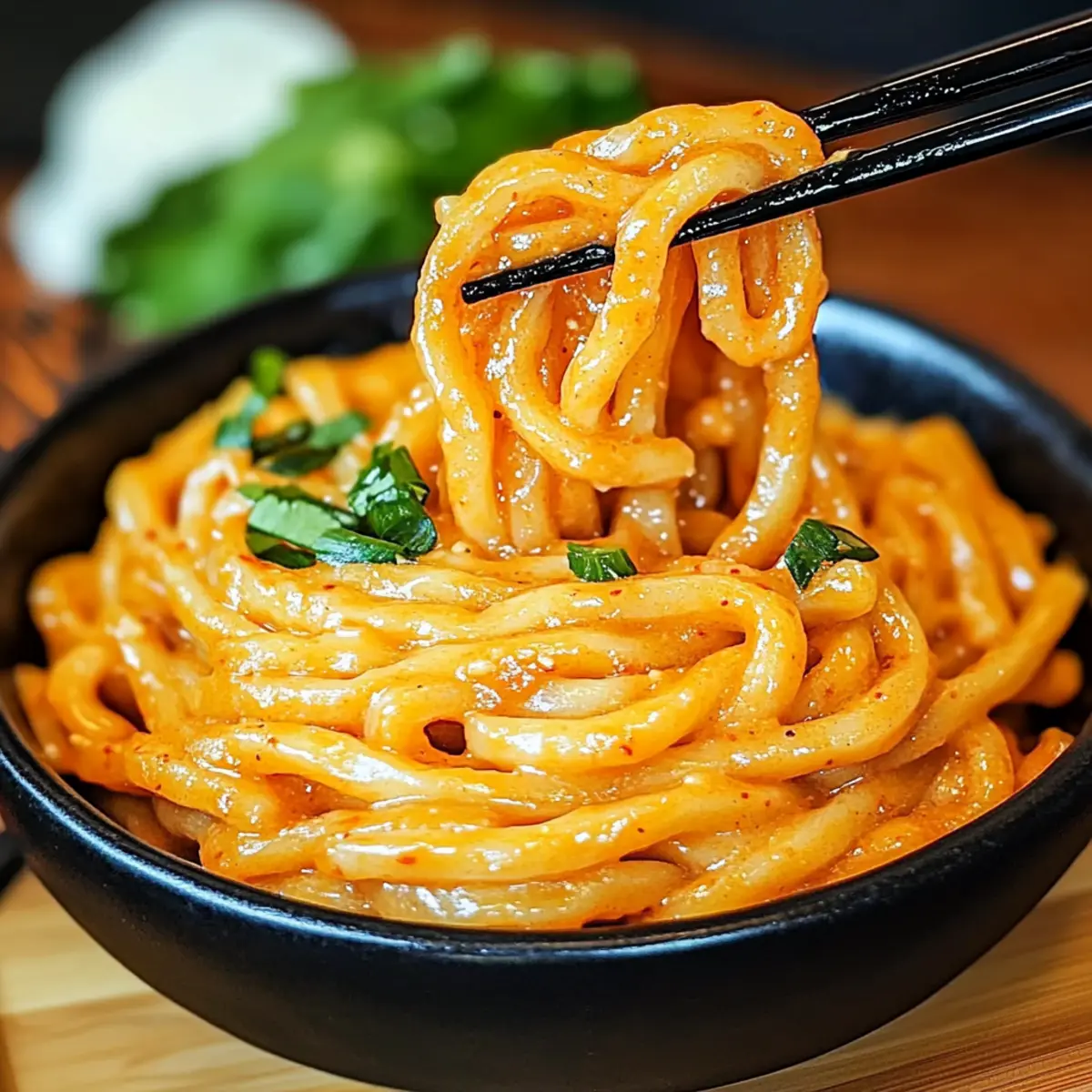
Creamy Gochujang Udon Noodles Recipe FAQs
What type of udon noodles should I use?
I recommend using fresh or frozen udon noodles for the best texture, but dried noodles work too—just adjust the cooking time according to the package instructions. If you're looking for a gluten-free option, rice noodles can be a delightful substitute!
How do I store leftover Creamy Gochujang Udon Noodles?
Once cooled, transfer leftovers to an airtight container and store them in the fridge for up to 3 days. If you want to keep them longer, you can freeze the noodles for up to 3 months. Just ensure they are completely cooled before storing!
Can I freeze Creamy Gochujang Udon Noodles?
Absolutely! To freeze, place the cooled udon noodles in a freezer-safe container. When you're ready to eat, thaw them overnight in the fridge. Reheat on the stove, adding a splash of coconut milk or water to restore creaminess. This step is key to keeping them delicious!
What if my noodles become too sticky or clumpy?
If you find your noodles are a bit sticky after cooking, you can toss them with a small amount of vegetable oil to help keep them separate. Additionally, if you overcook them initially, try to handle them gently during mixing to prevent clumping.
Are there any dietary considerations I should be aware of?
This recipe is vegetarian-friendly, but if allergies are a concern, be mindful of the soy sauce and peanut butter, as they could trigger reactions. You can use tamari for a gluten-free option and substitute peanut butter with tahini if necessary. Always check labels for any allergies!
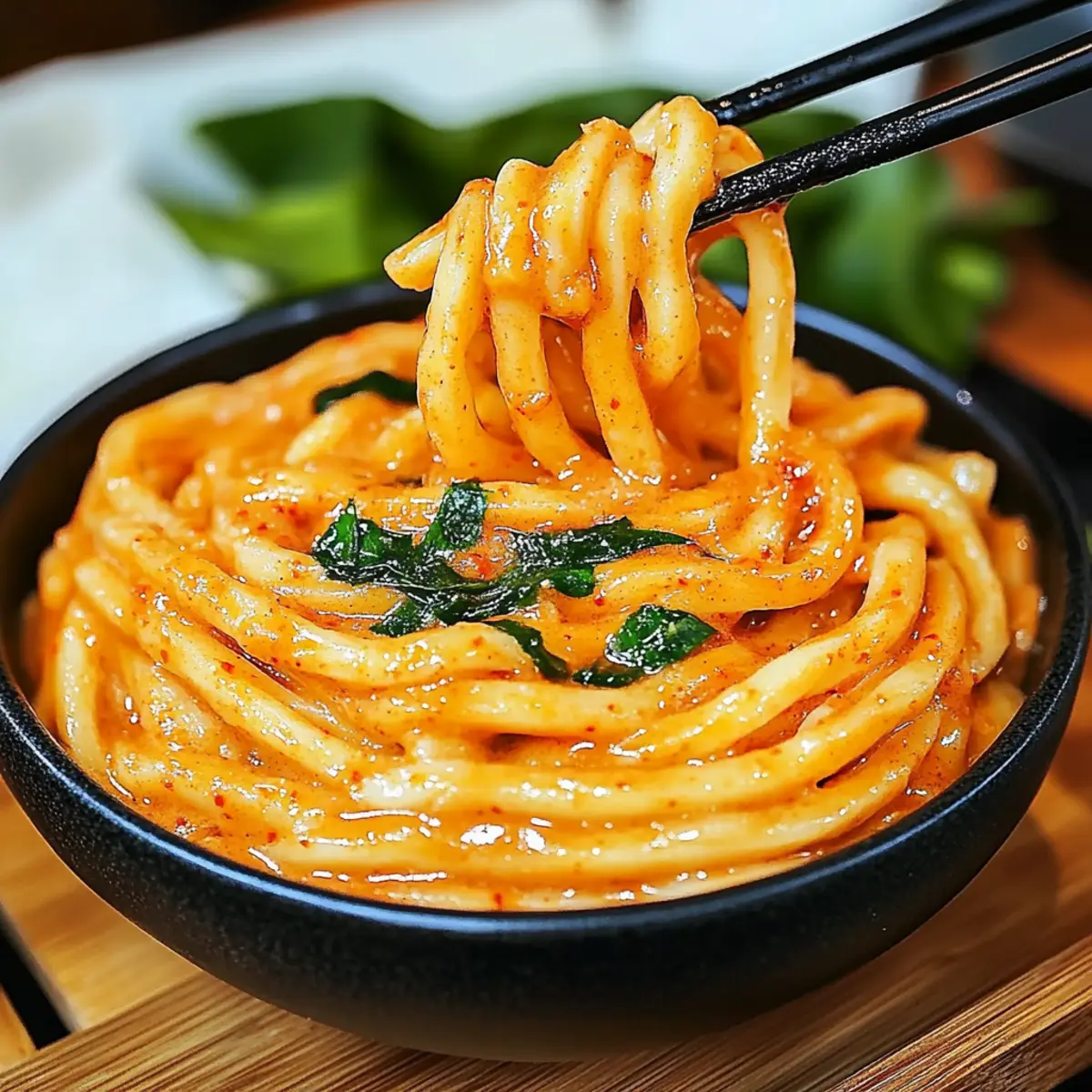
Indulgent Creamy Gochujang Udon Noodles in 25 Minutes
Ingredients
Equipment
Method
- Begin by filling a large pot with water and bringing it to a boil over high heat. Add the udon noodles and cook according to package instructions for about 8-10 minutes. Once tender but still chewy, drain and set aside; do not rinse.
- In a large skillet, heat 1 tablespoon of vegetable oil over medium heat. Add minced garlic and grated ginger, stirring for about 1 minute until fragrant and golden.
- Add broccoli florets, sliced bell peppers, and snap peas to the skillet, sautéing for 5-7 minutes until vibrant and tender-crisp.
- In a medium bowl, whisk together gochujang, peanut butter, soy sauce, rice vinegar, honey, and coconut milk until smooth.
- Pour the creamy gochujang sauce over the sautéed vegetables. Add the cooked udon noodles and toss until everything is evenly coated in sauce.
- Continue to stir-fry for an additional 2-3 minutes on medium heat to meld flavors and ensure everything is hot.
- Remove from heat and transfer to serving plates. Garnish with sliced green onions and sesame seeds. Serve hot.

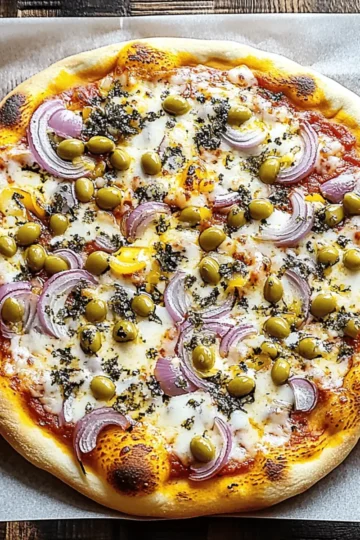
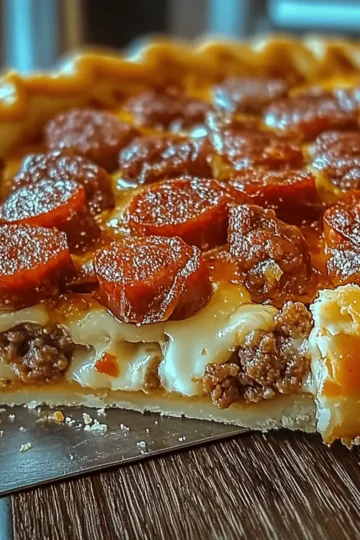
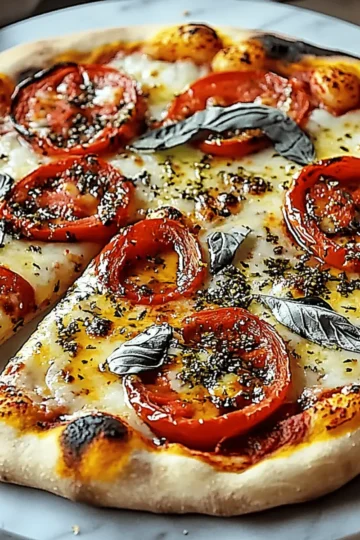
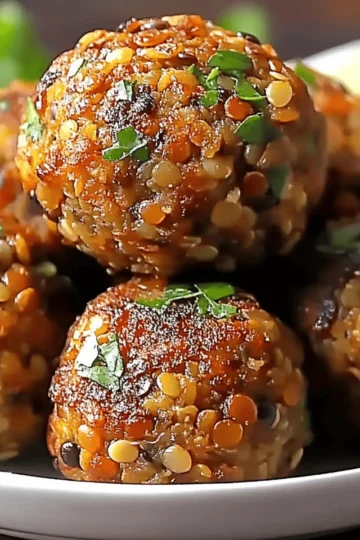
Leave a Reply